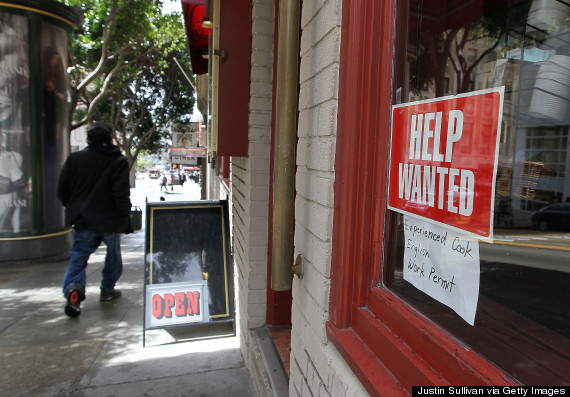By Andy Sullivan
WASHINGTON (Reuters) – One part of the Obama administration’s technically flawed HealthCare.gov website is actually working as promised. Unfortunately, the company that built it does not intend to seek more government business.
Working out of a garage a few blocks north of the White House, a 12-person software shop called Development Seed built a customer interface praised for its elegance and stability, a bright spot in the rollout of a website that has been an embarrassment for President Barack Obama.
But chief executive Eric Gundersen said his company will not seek another slice of the $ 82 billion the U.S. government will spend on technology this year because of the paperwork and regulatory hurdles.
“We don’t have proposal writers and lawyers. We have developers,” Gundersen said.
The technical problems since the October 1 debut of the website have cast a harsh light on the federal government’s tangled procurement process, a system that favors incumbents with long track records but leaves little room for innovation.
As a result, the government struggles to deliver the sophisticated digital services that tech-savvy consumers have come to expect.
Obama has apologized repeatedly for the performance of the website that is central to his healthcare overhaul. But he and other officials also have pointed fingers at the project’s contractors, who have been paid at least $ 174 million for their work so far. Contractors say the administration is ultimately to blame.
The site has been plagued by timeouts, errors and slow responses, although an emergency effort to get the site running smoothly for most visitors has resulted in some improvements.
Fewer than 27,000 people signed up for private health insurance plans through the federal marketplace in October, a tiny fraction of the millions ultimately needed to make it financially viable.
Technology projects have never been easy for the federal government. One problem, say former administration officials, is that agencies too often rely on established contractors. Those contractors feel little pressure to innovate because there is no competition from cutting edge companies, which are deterred by government red tape.
More nimble tech firms such as Development Seed find it hard to overcome hurdles that surround competitive bidding or dealing with risk-averse bureaucrats. All but one of the 47 companies that worked on HealthCare.gov had done previous government work, according to the Sunlight Foundation, a watchdog group.
Obama himself says government too often gets it wrong.
“How we purchase technology in the federal government is cumbersome, complicated and outdated,” he said last week.
“We might have done more to make sure that we were breaking the mold on how we were gonna be setting this up,” he said. “But that doesn’t help us now.”
POOR RECORD
Government has a poor track record in tackling large technology projects. The Standish Group, a research firm, found that 40 percent of large federal, state and local tech projects are canceled or abandoned, while only 5 percent are completed on time and on budget. The research firm did not provide reasons.
Perhaps the only thing that makes HealthCare.gov exceptional is its high visibility.
“It’s not an unusual screw-up,” said Charlene Frizzera, a former acting head of the Centers for Medicare and Medicaid Services (CMS), the agency overseeing implementation of the Patient Protection and Affordable Care Act, which passed in 2010.
Even an effort to streamline the way the government buys goods and services came in years late, at twice the anticipated cost. That website, SAM.gov, crashed shortly after going live in 2012 and is still riddled with glitches.
The HealthCare.gov site illustrates the divide between companies specializing in government work and the freewheeling start-up culture that flourishes in Silicon Valley and other tech hubs.
Development Seed did not bid on the healthcare project. It was brought in as a subcontractor by a top official at the Department of Health and Human Services (HHS) who admired its emphasis on simplicity and “open source” design, the practice of releasing software code to the public so outsiders can spot flaws and suggest fixes.
“This is cutting edge, sort of where things are going,” HHS chief technical officer Bryan Sivak said of Development Seed at a conference in March.
Development Seed reduced the number of computer servers involved in its part of the website from 32 to two, minimizing potential failure points, and finished work in June.
Gundersen said officials like Sivak, a former tech officer for the state of Maryland and the District of Columbia, ultimately had limited control.
“We’ve probably got one of the most visionary guys, that actually gets code, from a tech background, being the chief technology officer,” Gundersen said of Sivak. “And still he can’t turn the battleship?”
INSIDE TRACK
As Development Seed finished its work on the front page of HealthCare.gov this spring, a much larger company called CGI Federal scrambled to assemble the back end.
CGI Federal is a division of Montreal-based tech services provider CGI Group Inc, which globally employs 68,000 people. Roughly a quarter of its $ 1.3 billion revenue last fiscal year came from the U.S. government.
Like many large federal contractors, CGI spends handsomely to influence Washington. It spent $ 200,000 on lobbying last year, and its employees donated $ 128,500 in last year’s election to federal candidates from both parties.
CGI ultimately could earn as much as $ 292 million under the HealthCare.gov contract, which it won over three other companies in 2011.
Even if it had wanted to, a small company like Development Seed would have been unable to bid on the main HealthCare.gov contract – CMS limited the competition to 16 companies already selected as primary technology providers under an open-ended contract in 2007.
CMS shaved months off the bidding process by limiting competition to those pre-screened companies. The website needed to be up and running by October 1, 2013.
A large company like CGI handles other complex projects for CMS, and it had the resources to build the site’s complicated health exchange, said several people familiar with the process.
The company declined to comment for this story.
“Companies that compete for government business every day have to use the latest technologies to be successful,” said contracting expert Larry Allen, who said CMS had ensured an adequate level of competition when awarding the contract.
But companies with the ability to bid for big government projects often rely on technology that is years out of date, several former Obama administration officials said.
“This is a stagnant community – they do not have to keep up with the latest technology,” said Clay Johnson, a onetime Presidential Innovation Fellow who developed a tool that made it easier for small technology firms to bid on government work.
Merici Vinton, a former assistant to the chief information officer at the Consumer Financial Protection Bureau, said agency employees were better informed about technology than some vendors who competed to build its ConsumerFinance.gov site in 2010.
“I was shocked at the quality of the projects they were promising,” Vinton said in an email.
COMPLEX TASK
With HealthCare.gov, CGI took on a task of enormous complexity.
An insurance applicant’s identity and income must be verified through computer systems at the Social Security Administration, the Internal Revenue Service and the Department of Homeland Security. Then, the system checks databases from more than 170 insurance carriers to find the best plans.
The Obama administration has acknowledged it did not leave CGI and other contractors enough time to test the system before it went live.
But administration officials also have said CGI failed to meet certain development goals. A top CMS official, Henry Chao, worried three months before the site’s launch that quality problems could “crash the plane at take-off,” according to government documents obtained by Reuters.
CGI has blamed other contractors for site problems and the administration for last-minute design changes.
It is unclear whether the government would have gotten a better result if it had recruited more companies like Development Seed, rather than relying on established contractors like CGI.
Gundersen said his company lacks the scale to tackle such complex projects, and other contracting experts say it is often more cost-effective to go with a larger company that already has the engineers and other resources needed to tackle the job.
But the administration may have ended up with a better website if it had gone with a company that used some of the more current techniques now commonplace in companies that serve the private sector, former Obama administration officials say. Open source development, for example, could have enabled engineers to spot possible flaws sooner and keep the complexity of the site to a minimum.
“Government could benefit from that dynamic, but it has saddled itself with a procurement and contracting model that makes it off-limits,” said Andrew McLaughlin, a former White House deputy chief technology officer.
(Editing by David Lindsey, Ross Colvin and Grant McCool)
- Politics & Government
- President Barack Obama
- Obama administration
- technology









